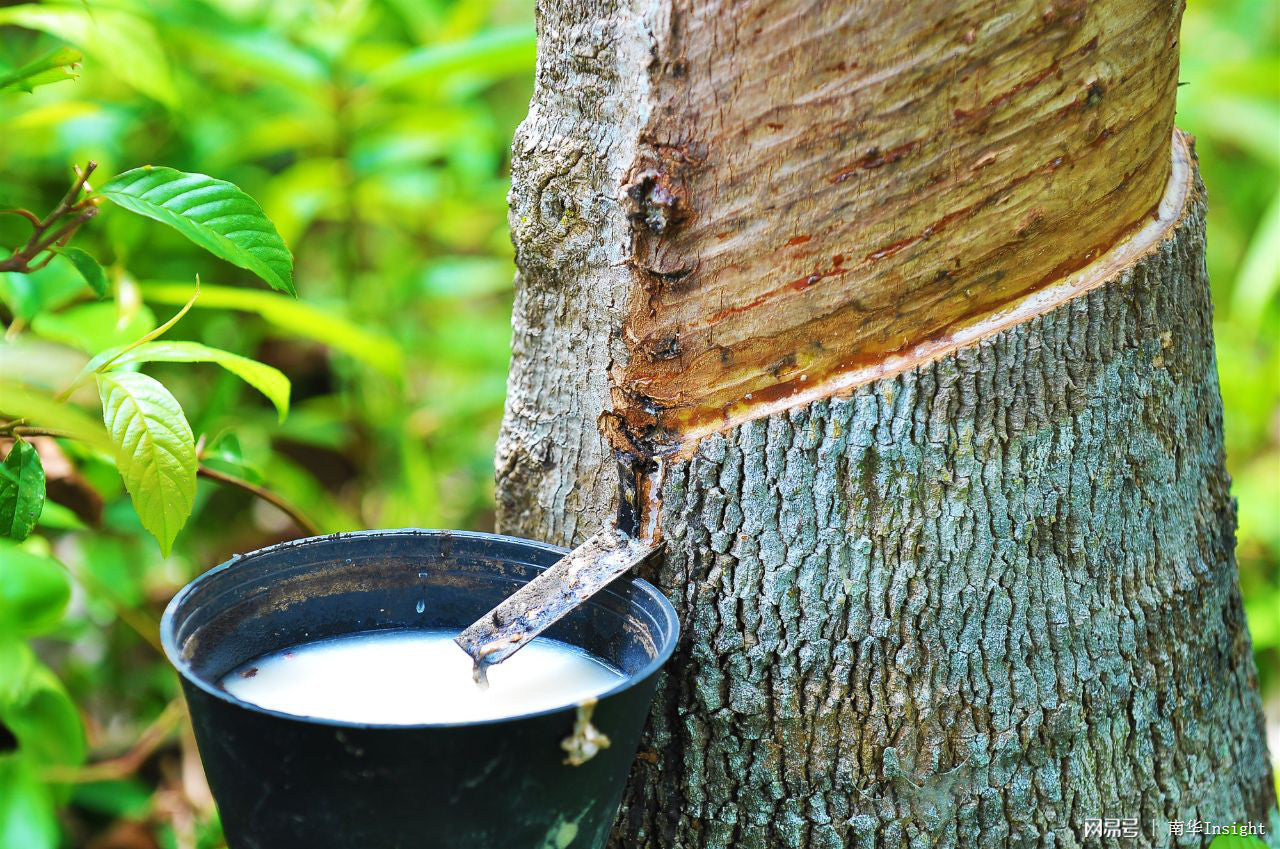All About Hevea Brasiliensis

Hevea brasiliensis, also known as the rubber tree, is a deciduous tree that grows as tall as 30 to 40m. It thrives in tropical climates. While most of this species of trees grow outside of Brazil, hevea brasiliensis is native to Brazil. You'll find plantations in locales like Liberia, Sri Lanka, and Vietnam.
History of Rubber Trees
Around 90 percent of all-natural rubber is derived from the Brazilian hevea brasiliensis rubber tree, which is a member of the euphorbia family, and native to the Amazon Basin. The Brazilian rubber tree is among over 2,000 plant species that also produce natural rubber, but is the only present commercial source.
In World War II, due to the natural rubber shortage, U.S. scientists tried to turn common milkweed's latex into a rubber-like alternative.
Germinated seedlings were delivered to Ceylon (Sri Lanka now) in 1877 to be grown and nurtured. Seedlings were sent from Colombo to Singapore and Malaysia. Originally, the prospects were grim with a lot of false starts. The success of coffee and tea in these areas posed another obstacle in persuading planters to adopt rubber.
In 1895, Singapore Botanical Garden's, Henry Ridley, finally convinced two coffee growers to plant a couple of acres of rubber as a test. After that, the trees grew strong, and the rubber plantation success had begun. The method of "tapping" rubber trees for latex was also developed in Singapore. In previous times, to collect latex, the rubber trees were cut down.
In the late 19th century, the automobile was invented, and the rubber boom began. Over 300,000 hectares of rubber was growing in 1905 in Malaysia and Ceylon. While the mid 20th century invention of synthetic rubber threatened natural rubber, today almost 40 percent of the market has recaptured it, mostly because of the widespread "radial tire" adoption which can't be produced with synthetic rubber; also, because of the high oil prices worldwide. Presently, Sri Lanka has over 122,000 hectares of rubber plantation that produces 129,000 hectares of latex each year.
Significance of Latex to Humans
First discovered by the ancient Maya, Aztec and Olmec, the rubber tree's latex sap was once used for making things like:
- Rubber balls
- Homemade shoes
- Waterproofing clothes
These days, the rubber tree's latex sap is still used in modern rubber processing, and is a significant source of income in native populations.
Latex Products
Latex, as mentioned, is the natural sap that's excreted by the rubber tree's bark when damaged. It contains proteins, amino acids, and other natural compounds as well as latex polymers, which have become valuable to modern life. Latex is a milky substance, however, it's mostly water, so it requires further reduction to be usable as latex.
It has a variety of uses, including:
- Paint
- Clothing
- Rubber
- Mattresses
As demand and uses for latex increased, the demand for more trees grew swiftly, leading to massive latex plantations being planted all over the world in tropical climates, a substantial portion in Asia. Since individual trees can only produce small amounts of latex at one time, natural latex production occurs now at a large scale.
Synthetic latex is used in latex paint as a binder, which has little odor, isn't flammable, and cures to form the dry paint film. On the other hand, natural latex is typically chemical free, and is often used to manufacture natural latex mattresses.
It wasn't until the 1920s that latex was used for making foam. In the late 1920s, the Dunlop company's British scientist, E.A. Murphy, is thought to be credited for the production of the first latex foam.
Although this opened up the possibility of constructing latex mattresses, it wasn't until five years of research and study (along with plenty of failed attempt and mishaps) before the creation of bubbles was figured out for producing a latex mattress. Eventually, the construction of latex mattresses evolved into the Talalay and Dunlop processes that are popular today.
Natural latex foam is an extremely supportive and comfortable sleep surface. It provides support where needed by conforming to your body, and helping to keep your spine aligned throughout the night. It offers cushion for pressure points like shoulders and hips and freedom of movement, allowing for a restful and comfortable night's sleep.
Natural latex is also mildew, mold, and dust mite resistant. So, if you have allergies, sleeping on a natural latex mattress, like the Eco Terra Latex Mattress, made from the hevea brasiliensis rubber tree, will relieve your allergies and allow you to have a much less congested, sounder sleep.







